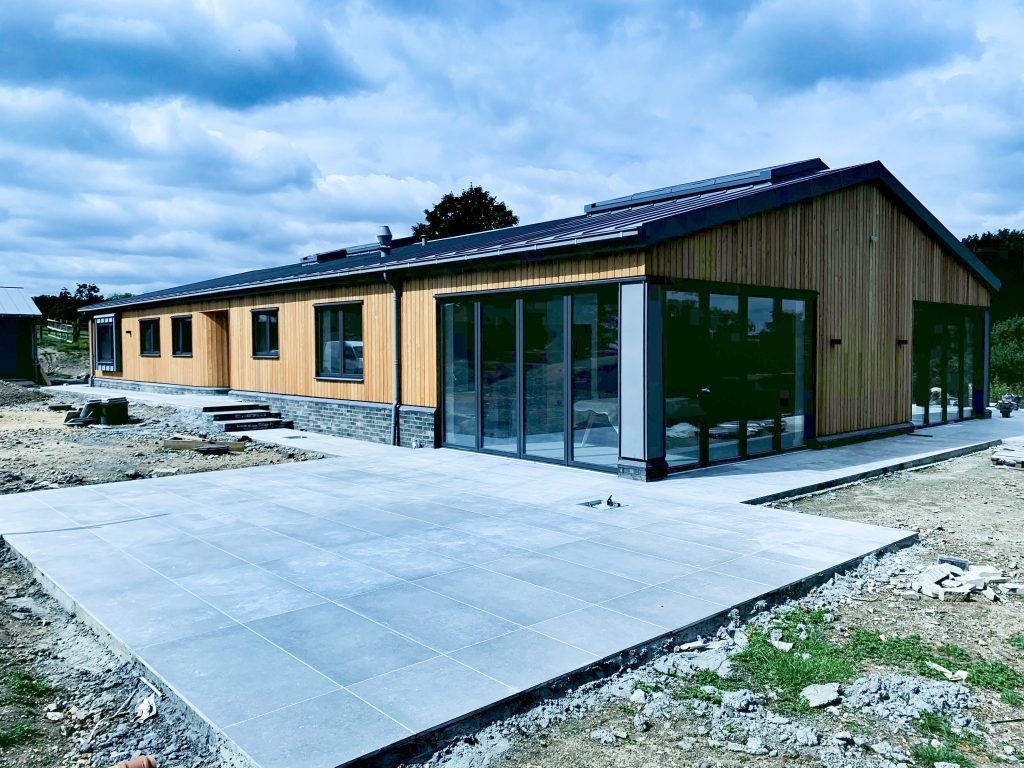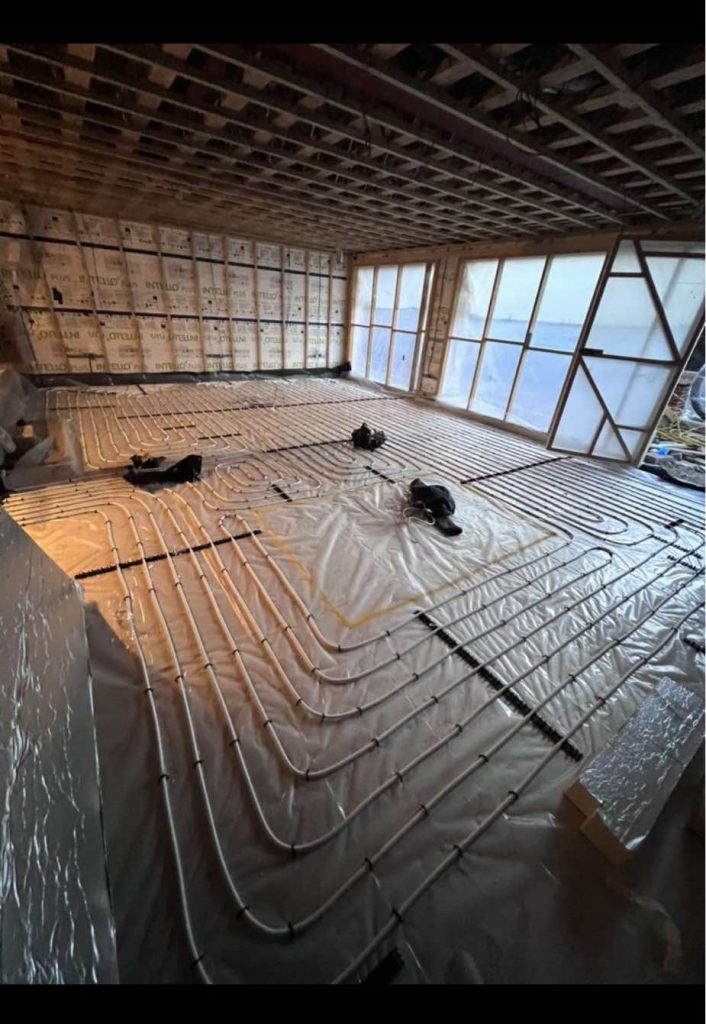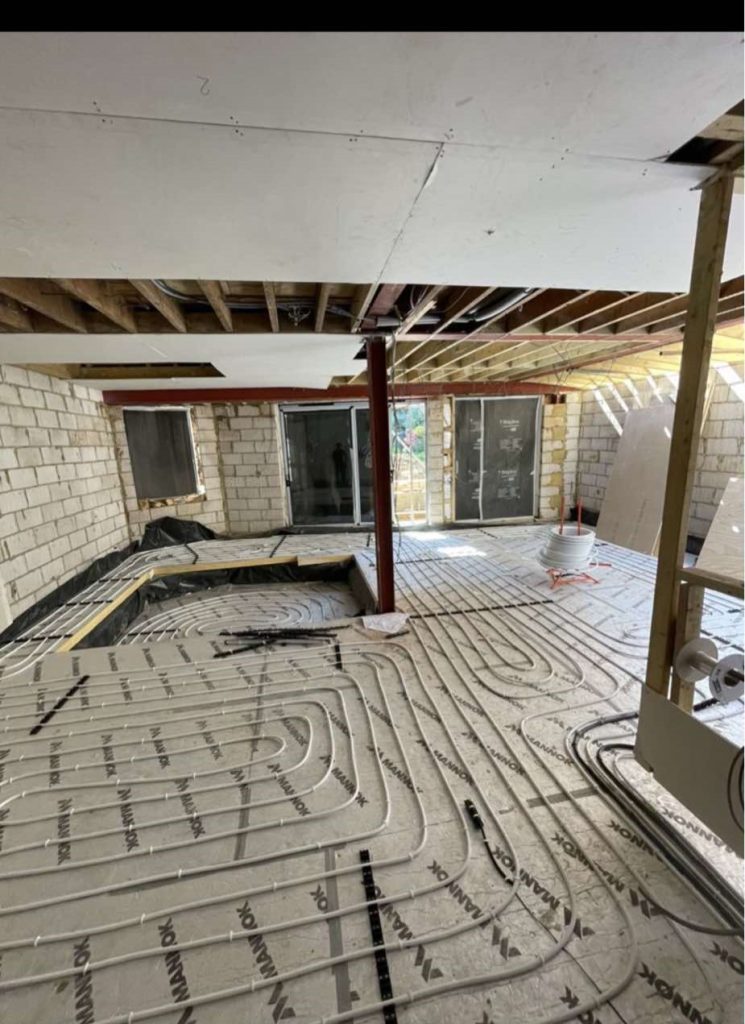As homeowners and commercial property owners increasingly seek energy-efficient solutions, the combination of heat pumps and underfloor heating has become a popular choice. Both systems are highly efficient, eco-friendly, and capable of delivering consistent heating. But are heat pumps and underfloor heating truly compatible, and what factors should be considered before installation? In this blog, we’ll explore the compatibility of these systems, as well as the pros and cons of pairing them together.
How do heat pumps and underfloor heating work?
Before diving into compatibility, let’s briefly look at how each system works:
- Heat Pumps: Ground source heat pumps (GSHP) and air source heat pumps (ASHP) extract thermal energy from the ground or air to heat your home. They operate at lower temperatures than traditional boilers and designed correctly they are more energy-efficient solution for maintaining comfortable indoor temperatures.
- Underfloor Heating: This system involves pipes installed beneath your flooring. It evenly distributes heat across the floor’s surface, providing a radiant and comfortable warmth that eliminates the need for traditional radiators.
Compatibility of heat pumps and underfloor heating
Heat pumps are highly compatible with underfloor heating systems because both operate most efficiently at lower temperatures. Traditional radiators often require water heated to around 70°C, whereas underfloor heating can operate effectively with water temperatures of just 35-45°C—the perfect range for heat pumps. Here are some important considerations for ensuring optimal performance:
System design and planning
When combining heat pumps with underfloor heating, proper design and installation are crucial. The size of the heat pump, the heat distribution in the underfloor pipes, and the insulation of the building need to be considered. A well-designed system will ensure the heat pump can deliver the required heat with the lowest possible flow temperatures, maximising efficiency.
Floor insulation
Good insulation is essential when combining heat pumps with underfloor heating. Without sufficient insulation, heat loss can occur, which forces the heat pump to work at a higher temperature, reducing its efficiency. Ensuring your property is well-insulated will optimize the performance of both systems. The most crucial element of insulation is underneath the underfloor pipes, on the ground floor, to avoid heat being lost to the ground.
Thermal mass
For buildings with high thermal mass (like those with concrete floors), underfloor heating combined with heat pumps can offer excellent heat retention. The floors will store the heat generated by the heat pump and gradually release it, ensuring stable indoor temperatures throughout the day.
Pros of combining heat pumps and underfloor heating
1. Increased energy efficiency
One of the biggest advantages of combining heat pumps and underfloor heating is the enhanced energy efficiency. Since underfloor heating typically can operate at lower temperatures than traditional radiators, it’s a perfect match for the low-temperature output of heat pumps. This pairing ensures that the heat pump doesn’t need to work as hard, reducing electricity consumption and lowering heating bills.
2. Even heat distribution
Underfloor heating provides a consistent, even distribution of heat across the floor, creating a comfortable environment without cold spots. This is ideal for heat pumps, as they provide steady, gradual heating that works best with systems designed for low-temperature distribution.
3. Improved comfort
Underfloor heating offers a more natural, radiant form of heating. It eliminates the need for radiators, which can create uneven heat distribution and occupy valuable wall space. Pairing it with a heat pump enhances the overall comfort, particularly in open-plan spaces or homes with large floor areas.
4. Cooling
Both ground and air source heat pumps can provide cooling via the underfloor pipes in the summer. We call this ‘comfort cooling’. The cooling effect is not as strong as traditional air conditioning, but it is possible to reduce room temperatures with 3-5°c.
Cons of combining heat pumps and underfloor heating
1. Higher installation costs
While the long-term energy savings are substantial, the initial costs for installing both a heat pump and an underfloor heating system can be significant. Installing underfloor heating in existing properties involves significant disruption, as it requires raising or replacing floors. Additionally, the installation of heat pumps can also be costly, particularly for ground source systems that require extensive groundwork.
2. Slow response time
Underfloor heating systems have a slower response time compared to radiators. This means that it may take longer to heat a room when the system is first turned on. While this isn’t necessarily a downside for consistent use, it can be an issue if you need rapid changes in temperature. Heat pumps also tend to work best when providing steady, low-level heating over long periods, which may not suit all households or building types.
3. Need for high insulation
Both heat pumps and underfloor heating systems perform best in well-insulated homes. If your property lacks sufficient insulation, you could experience high heat loss, forcing the system to work at higher temperatures, reducing efficiency. Retrofitting insulation can add to the upfront costs if your building isn’t already well-insulated. The government runs the Great British Insulation Scheme which can support home insulation.
Conclusion: Is the combination right for you?
Combining heat pumps with underfloor heating offers an incredibly efficient, eco-friendly heating solution that can provide long-term cost savings. It’s an excellent choice for new builds or properties with high levels of insulation, where low-temperature heating systems can perform at their best.
However, homeowners and businesses need to weigh the initial installation costs and potential retrofitting challenges against the long-term benefits. Proper planning, insulation, and system design are key to getting the most out of this pairing.
If you’re considering heat pumps and underfloor heating for your property, contact Better Planet UK Ltd to speak with an expert and find the best solution for your property.
by Jamie Greening, Sales Engineer













